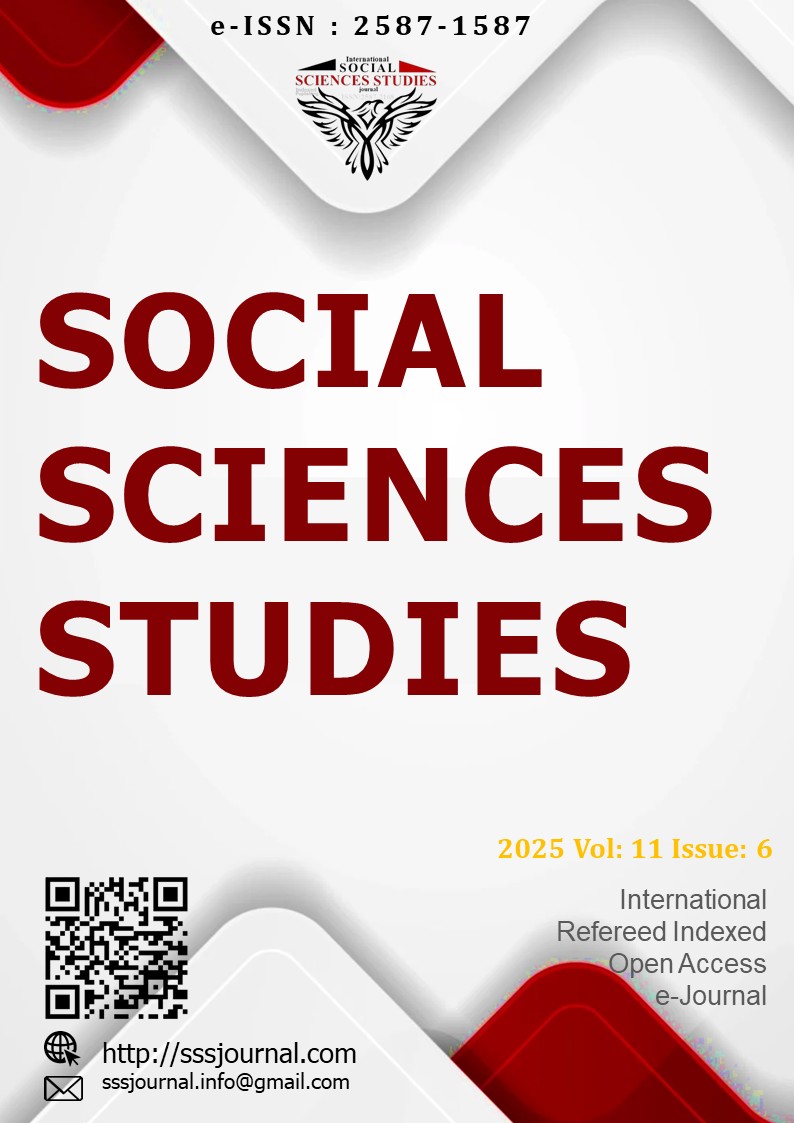Author :
Abstract
Afyonkarahisar ili Erenler köyündeki geleneksel Türk işleme örneklerinin biçimsel özelliklerinin incelendiği bu çalışma, saha taramasına dayalı betimsel bir araştırmadır. Çalışmanın örneklemini, 8 adet çevre, 6 adet uçkur ve 1 adet peşkir olmak üzere toplam 15 adet işlemeli örnek oluşturmaktadır. Araştırma kapsamına alınan örnekler yerinde incelenmiş; örnekler hakkında kaynak kişilerden bilgiler alınmış; örneklerin tür, gereç, renk, teknik, bezeme ve kompozisyon özellikleri incelenmiş; inceleme neticesinde tespit edilen özellikler bilgi formlarına kaydedilmiş ve örnekler fotoğrafla kayıt altına alınmıştır. Erenler köyü kadınları tarafından 20. yüzyılın ilk yarısında işlenen bu örneklerin dokumasında ve işlemesinde çoğunlukla pamuk lifli iplikler kullanılmıştır. Örneklerin çoğunluğunda, yörede canfır denilen krem renk patiska kumaşı üzerine pamuklu işleme ipliği ve yöresel ismi gılbıdan olan altın sarısı renginde metal bükümlü iplik kullanılmıştır. İşlemelerde, mor, kırmızı, mavi, pembe, sarı, yeşil, kahverengi, turuncu, gri, lacivert, siyah gibi renkler tercih edilmiştir. Renklendirmelerdeki üslup; tonlamasız sert geçişlerin, kontrastların ve pastel renklerin kullanımına dayanmaktadır. Ana iğne tekniklerinin düz sarma ve verev sarma olduğu bu işleme örneklerinin bazı motiflerinde, sap işi, hasır iğne ve balıksırtı teknikleri yardımcı iğne olarak kullanılmıştır. İşleme örneklerinin tamamında bitkisel bezeme konuları işlenmiştir. Bezeme konuları, örneklerin üzerine Türk işleme sanatında benimsenen kompozisyonlara göre yerleştirmiş; kare formlu çevrelerin dört köşesinde yer alan motifler bir merkeze doğru yönlendirilmiş, dikdörtgen formlu uçkurların iki ucuna tek bir motif yerleştirilmiş ve ana motifler kenar suyu düzenlemeleriyle zenginleştirilmiştir
Keywords
Abstract
This study, which examines the formal characteristics of traditional Turkish embroidery samples in Erenler village of Afyonkarahisar province, is a descriptive research based on field scanning. The sample of the study consists of a total of 15 embroidered samples, 8 girths, 6 uçkurs and 1 peşkir. The samples included in the scope of the research were examined on site; information was obtained from source persons about the samples; the type, material, color, technique, ornamentation and composition features of the samples were examined; the features determined as a result of the examination were recorded in information forms and the samples were recorded with photographs. Cotton fiber yarns were mostly used in the weaving and embroidery of these samples, which were embroidered by the women of Erenler village in the first half of the 20th century. In the majority of the samples, cotton embroidery yarn and golden yellow metal twisted yarn, locally called gilbıdan, were used on cream-colored calico fabric called canfır in the region. Colors such as purple, red, blue, pink, yellow, green, brown, orange, gray, navy blue and black were preferred in the embroidery. The style in coloring is based on the use of sharp transitions without toning, contrasts and pastel colors. In some motifs of these embroidery examples, where the main needle techniques are plain wrapping and diagonal wrapping; stem work, wicker needle and herringbone techniques are used as auxiliary needles. All embroidery samples feature plant-based ornamentation. The ornamental themes are placed on the examples according to the compositions adopted in Turkish embroidery art; the motifs in the four corners of the square-shaped circles are directed towards a center, a single motif is placed at both ends of the rectangular-shaped ends and the main motifs are enriched with edge water arrangements.





